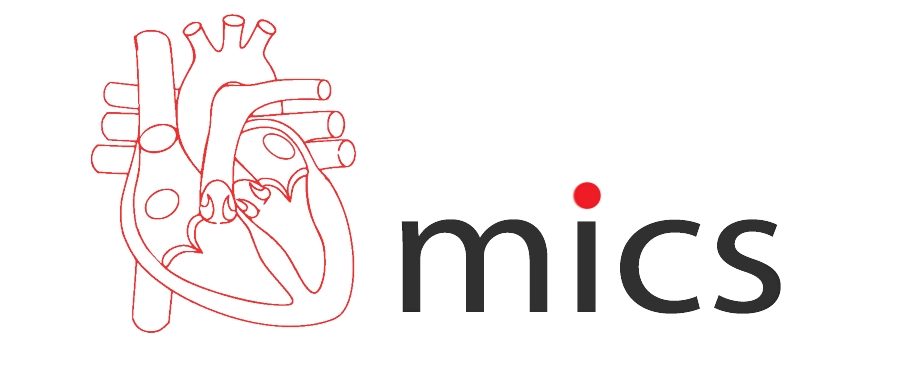Minimally invasive heart surgery is an alternative to traditional open-heart surgery. With minimally invasive heart surgery, the surgeon makes smaller incisions than in open-heart surgery so that the chest muscles and bones aren’t cut as much. It means that recovery after the procedure is faster, and there are fewer risks involved than with traditional open-heart surgery.
Minimally invasive heart surgery allows patients to have heart surgery without requiring long operating times, large incisions and long recovery times that are typical of open-heart surgery. With minimally invasive heart surgery, some or all of your open-heart surgery may be done using smaller tools called endoscopes. Minimally invasive heart surgery reduces the size of your incision and involves less trauma to the tissue. It can help prevent heart valve damage and reduce pain, swelling, and complications. The smaller incision also allows for easier recovery and quicker discharge from the hospital.
Minimally invasive heart surgery is a newer, less invasive type of heart surgery you may be offered. For example, instead of ‘clipping’ your blocked artery, the surgeon may instead make a small ‘snip’ in your artery and then insert a device made from cloth or metal mesh to keep it open. It sounds like a minor modification.
Types of Minimally Invasive Heart Surgeries
Even though we work to make minimally invasive heart surgery possible for most patients, only you and your doctor can decide if it is the best option for you.
For the following procedures, we use minimally invasive cardiac surgery:
- Aortic valve replacement
- Atrial septal defect and patent foramen ovale closure
- Atrioventricular septal defect surgery
- Coronary artery bypass surgery
- Maze procedure for atrial fibrillation
- Mitral valve repair or replacement
- Saphenous vein harvest for coronary artery bypass surgery
- Tricuspid valve repair or replacement
Who should have Minimally Invasive Heart Surgery?
If you have a blockage in one or more coronary arteries, usually in the front of the heart, your doctor may advise a minimally invasive coronary artery bypass.
When one or more coronary arteries are completely or partially clogged, your heart does not receive enough blood. Ischemic heart disease or coronary artery disease are the two names for it. It may result in chest pain (angina).
Perhaps medication was the first line of treatment your doctor tried on you. Additionally, you might have attempted cardiac rehab or other therapies like angioplasty with stenting.
Everybody has a different level of coronary artery disease. The heart bypass procedure is merely one form of treatment. It may not be suitable for everyone.
Alternative surgeries or treatments for minimally invasive cardiac bypass are:
- Angioplasty and stent placement
- Coronary bypass
Risk & Complications included with Minimally Invasive Heart Surgery
The risks of surgery will be discussed with you by your doctor. Complications from minimally invasive coronary artery bypass surgery are often lower than those from open coronary artery bypass surgery.
Surgery-related risks include the following:
- Blood clots in the legs may have a chance of moving to the lungs.
- Blood loss.
- Breathing problems.
- Heart attack or stroke.
- Lung, urinary tract, and chest infections.
- Temporary or permanent brain injury.
Possible risks of coronary artery bypass include:
- Loss of memory, mental confusion, or “fuzzy thinking.” A minimally invasive coronary artery bypass patient is less likely to experience it than an open coronary bypass patient.
- If you are fat, have diabetes, or have already undergone coronary bypass surgery, you are more prone to develop a chest wound infection.
- Postpericardiotomy syndrome, which causes low-grade fever and chest pain, can linger up to 6 months.
- Pain at the site of the cut.
- During surgery, switching to a traditional method with a bypass machine may be necessary.
Life After Minimally Invasive Heart Surgeries
You might not experience the full effects of your surgery for three to six months, as recovery after surgery takes time. In most cardiac bypass patients, the grafts stay open and function normally for many years.
This procedure does not stop a blockage from recurring. You may take action to slow it down, though. You can accomplish the following things:
- Avoid smoking.
- Consume a heart-healthy diet.
- Exercise regularly.
- If you have diabetes, treat your high blood sugar, high cholesterol, and high blood pressure.
If you have a renal illness or other health issues, you can be more susceptible to experiencing blood vessel issues.
What are the Key Benefits of minimally invasive heart surgery?
Less pain: Patients with minimally invasive cardiac surgery recover significantly less discomfort because no breastbone cutting is involved.
Less scarring: Patients with minimally invasive heart surgery get significantly less scarring and a better cosmetic outcome.
Faster recovery: Heart surgery that is minimally invasive results in less physical stress. Patients recover more quickly than they would in weeks, thanks to the small incisions and avoidance of the breastbone. Compared to open heart surgery, patients can resume their regular activities sooner.
Short Stay: The average recovery time for patients who choose minimally invasive heart surgery is 2–5 days, as opposed to 8–10 days for patients who choose open heart surgery.
Low complication threat: Open-heart surgery carries the dangers of infection and bleeding. Although the minimally invasive technique has the same risks, the likelihood of these consequences occurring is low.
Conclusion
Which operation is best for you depends on a number of factors: Minimally invasive or open heart surgery. When making recommendations, Micsheart considers your age, general health status, and medical history. Call or book online to arrange a consultation if you’d like to learn more.
FAQs:
-Who is a candidate for minimally invasive heart surgery?
Most patients who require valve surgeries qualify for minimally invasive valve surgery.
-What can you expect during minimally invasive heart surgery?
Instead of cutting through the breastbone as in open-heart surgery, minimally invasive cardiac surgery entails making small incisions in the right side of the chest to reach the heart between the ribs.
-Does Minimally Invasive Surgery Shorten Recovery Time and Mean Less Pain?
Yes, Minimally Invasive Surgery shortens the recovery time and causes less pain.
-Why is minimally invasive heart surgery a better option than traditional surgery?
Minimally invasive heart surgery is a better option than traditional surgery because it shortens the recovery time & it’s less scarring.
-What is the average cost of a minimally invasive cardiac surgery?
The price range for minimally invasive coronary bypass surgery is between 1.6 to 3.5 lakhs.
-What are the risks & complications included in minimally invasive heart surgery?
- Bleeding.
- Stroke.
- Infection.
- Irregular heart rhythms (arrhythmias).
-When Can I Return to Most of my Normal Day-to-Day Activities after Minimally Invasive heart Surgery?
After minimally invasive heart surgery, you can resume your regular activities in one to two weeks.


